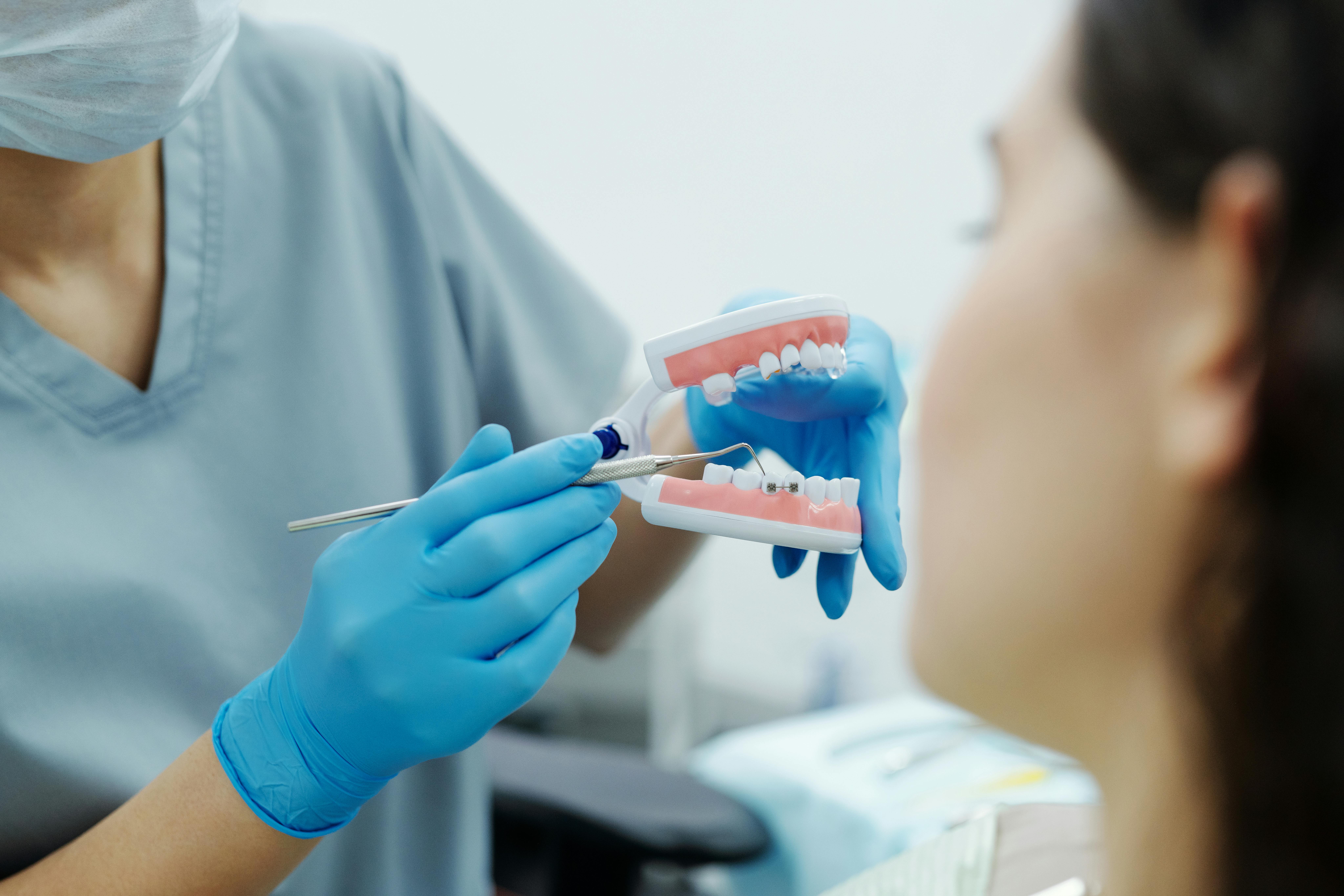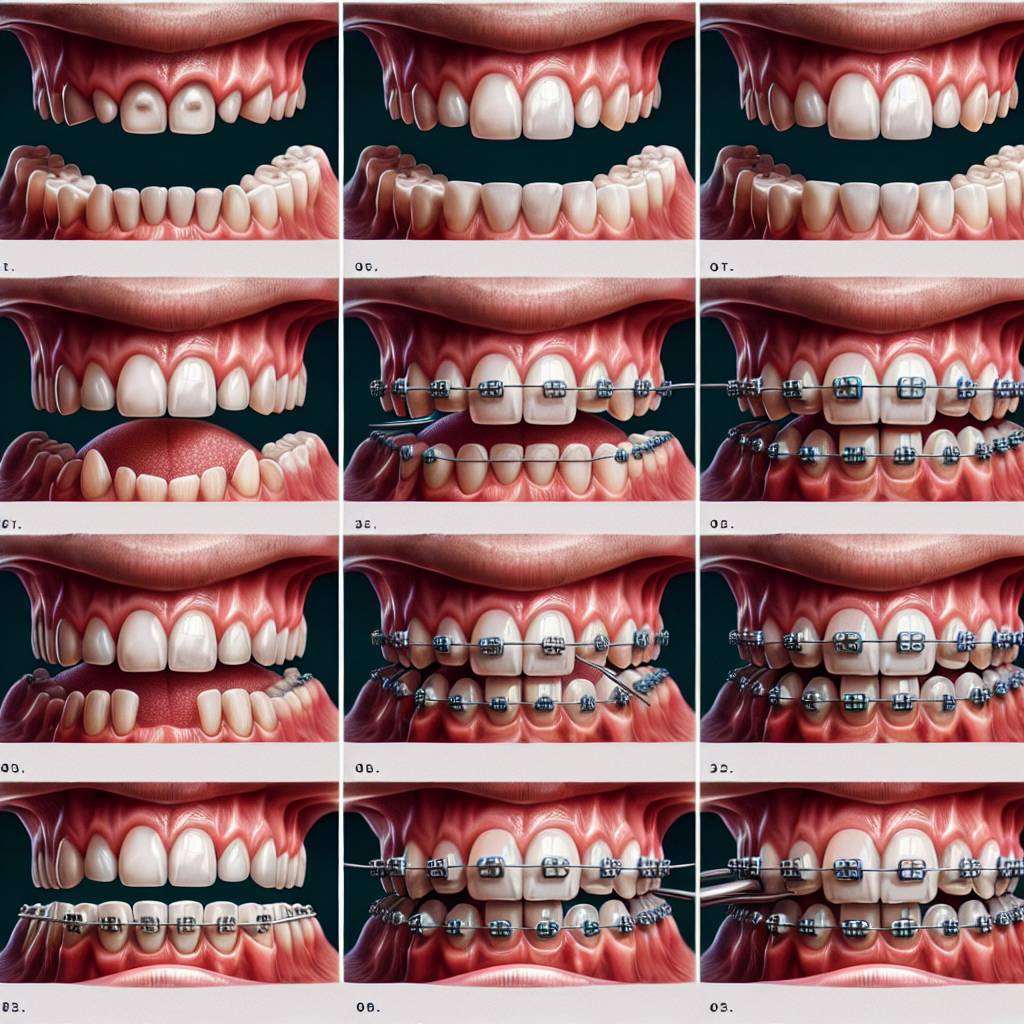Braces are a common orthodontic treatment used to correct misaligned teeth and jaws. Braces can be used to treat various types of dental issues, including crooked or crowded teeth, overbites, underbites, and open bites. The amount of time it takes for braces to fix your teeth varies depending on the severity of the misalignment and the type of braces you’re using. On average, it can take anywhere from one to three years for braces to fully correct your teeth. In this article, we’ll explore how long braces typically take to fix your teeth and what factors can affect their treatment timeline.The average amount of time for braces to fix teeth is between 18 and 24 months. However, the time frame may vary depending on the severity of the misalignment and how well the patient follows instructions for wearing the braces.
Factors That Affect Brace Treatment Time
Braces are a common orthodontic treatment used to realign teeth and correct misalignment issues. While results can vary greatly from person to person, the average treatment time for braces is between one and three years. There are several factors that can affect brace treatment time, including patient cooperation, type of braces, severity of malocclusion, and age of the patient.
Patient Cooperation
One of the most important factors affecting brace treatment time is how well the patient cooperates with wearing their braces. Removable appliances such as aligners or retainers must be worn as prescribed by the orthodontist in order for them to be effective. If a patient fails to wear their removable appliance as directed it could lead to prolonged treatment time or even failure of the treatment altogether.
Type of Braces
Another factor that affects brace treatment time is the type of braces chosen by the patient and/or orthodontist. Traditional metal braces have been around for decades and are often most cost-effective but they also require more frequent visits for adjustments than other types of braces such as ceramic or lingual (on the backside) braces. The type of braces chosen can affect how long it takes before a patient is able to achieve their desired results.
Severity of Malocclusion
The severity of malocclusion (also referred to as bite misalignment) is another factor that affects brace treatment time. If a patient has extremely crooked teeth or a severe overbite/underbite then it may take longer for them to reach their desired alignment than someone with milder issues like overcrowding or gaps between teeth. Severe cases may require more aggressive treatments such as jaw surgery which in turn requires more recovery time before any orthodontic treatments begin.
Age of Patient
Finally, age can play a role in how long a patient’s brace treatment takes because younger patients usually have less mature jaws which makes them more susceptible to changes during orthodontic treatments such as tooth movement and jaw growth. Additionally, older patients may have difficulty adjusting to wearing braces due to preexisting wear on teeth from years of eating and drinking which could also prolong treatment times.
Overall, while there are several factors that can affect brace treatment time, most cases will take between one and three years for completion depending on the individual’s needs and circumstances. Working closely with an experienced orthodontist will help ensure that your individual case is properly assessed and treated in an efficient manner so you can achieve your desired smile goals in a timely manner!
How Long Do Braces Take to Move Teeth?
The amount of time it takes for braces to move teeth depends on several factors, including the type of braces being used, the severity of the misalignment, and how often the patient visits their orthodontist for adjustments. In general, braces can take anywhere from six months to two years to move teeth into their desired position.
Patients who opt for traditional metal braces may experience a longer treatment timeline than those who choose ceramic or clear braces. This is because metal braces are more durable and provide more tension than their ceramic counterparts. Additionally, the amount of time that it takes for braces to move teeth also depends on how severe the misalignment is. For example, a patient with mild misalignment may require less time than someone with a more severe case.
It is also important that patients follow their orthodontist’s instructions when wearing their braces in order to ensure that the treatment process goes smoothly and efficiently. This includes attending all scheduled appointments for adjustments—which typically occur every few weeks—and following any dietary or hygiene restrictions outlined by the orthodontist. By adhering to these guidelines, patients can help reduce the overall treatment time and achieve their desired results in a timely manner.
Overall, patients should expect some variation in how long it takes for braces to move teeth depending on their individual case and how well they follow their orthodontist’s instructions. With regular visits for adjustments and diligent care at home, however, most patients should be able to experience successful results within one to two years from when they first started wearing braces.
Typical Timeline for Braces Treatment
The timeline for braces treatment depends greatly on the type of braces chosen and the complexity of the patient’s orthodontic needs. Generally speaking, metal braces are the most common type of braces and take an average of 18-24 months to complete treatment. The amount of time a patient wears braces can vary based on their specific needs and how well they adhere to their orthodontist’s instructions.
For patients with more complex orthodontic issues, ceramic or lingual braces may be recommended. Ceramic braces typically take 22-30 months to complete treatment, while lingual braces can take anywhere from 24-36 months depending on the severity of the case. Orthodontists often recommend clear aligners like Invisalign as an alternative to traditional metal or ceramic braces. The timeline for Invisalign treatment is generally 12-18 months, but can vary depending on individual cases.
Regardless of what type of brace is chosen, it is important that patients follow all instructions given by their orthodontist in order to ensure they reach their desired results in a timely manner. Regular visits are essential to monitor progress and make any necessary adjustments in order to ensure that treatment stays on track and that results are achieved as quickly as possible.
How Long Does It Take to Straighten Teeth with Braces?
Straightening teeth with braces can take anywhere from six months to two years or more, depending on the severity of the case. In general, minor orthodontic issues such as crowding and spacing can be corrected in as little as six months, while more complicated cases may take longer. Additionally, the amount of time it takes for teeth to be straightened is largely dependent on how well you follow your orthodontist’s instructions and keep up with regular check-ups and appointments.
The process of straightening teeth with braces involves a number of steps that need to be completed in order to achieve the desired result. During a typical treatment plan, your orthodontist will first assess your dental condition and create a plan based on your individual needs. This plan may include placing brackets onto your teeth, installing arch wires and rubber bands, or other appliances that are designed to move teeth into their correct positions over time.
Your orthodontist will then monitor the progress of your treatment every four to eight weeks by making adjustments to the arch wires or applying additional pressure to ensure that your teeth are moving in the right direction. Each adjustment helps gradually move your teeth closer together until they are properly aligned in their final positions. Depending on how complex your case is, this process may take anywhere from four months to two years or more.
It is important to note that while braces can increase the speed at which teeth are straightened compared to other treatments such as retainers or aligners, achieving optimal results requires patience and dedication. To ensure that your treatment stays on track and progresses as quickly as possible, it is essential that you follow all instructions given by your orthodontist and maintain good oral hygiene habits throughout the entire process.

Initial Consultation
The first step in the braces treatment process is the initial consultation. During this visit, your orthodontist will discuss your needs and concerns, review your medical and dental history, take X-rays, and assess the alignment of your teeth and bite. After reviewing the diagnostic information, your orthodontist will discuss the treatment options available to you and help you decide which one is best for you.
Placement of Braces
Once you have chosen a treatment plan with your orthodontist, they will begin to place the braces on your teeth. This is usually done in one or two appointments. During these appointments, the orthodontist will apply brackets to each tooth and connect them with wires or bands that hold them in place.
Adjustments and Follow-up Visits
During regular follow-up visits, your orthodontist will make adjustments to the wires and brackets to ensure that they are properly aligned on your teeth. This helps move your teeth into their desired position over time. Depending on the type of braces you have chosen, these adjustments may need to be done more frequently than others.
Removal of Braces
Finally, once your teeth have been moved into their desired position, your orthodontist will remove the braces from your teeth. During this appointment, they may also fit you for a retainer or other type of device that helps keep your teeth in place while they heal from the treatment process.
Will I Need Retainers After Wearing Braces?
After wearing braces, retainers are often necessary to help keep the teeth in their new position. Orthodontists typically recommend wearing a retainer for several months, or even years, after braces are removed. Retainers help to ensure that the teeth stay in their new position and prevent them from shifting back to their original alignment. The amount of time a patient needs to wear a retainer depends on the severity of their original misalignment and how well they follow instructions from their orthodontist.
Retainers are typically made from plastic and metal wires that fit over the teeth. The plastic holds the wire in place and helps to keep the teeth in their new position. Some retainers are removable, while others are permanently affixed to the teeth using dental cement or bonding material. Removable retainers need to be taken out at night for cleaning and should be cleaned with a soft toothbrush and toothpaste before being put back into the mouth.
It is important for patients to follow their orthodontist’s instructions carefully when it comes to wearing retainers after braces. If a patient does not wear their retainer as instructed, it can affect how well the treatment works and can lead to misalignment of the teeth once again. In some cases, a patient may need to wear a retainer for life in order to maintain good oral health and prevent further misalignment of the teeth.
In conclusion, most people will need to wear retainers after wearing braces in order to keep their newly aligned teeth in place. The amount of time that one needs to wear retainers will depend on how severe the original misalignment was and how well they follow instructions from their orthodontist. It is important for patients to follow all instructions carefully when it comes to wearing retainers so that they can maintain good oral health over time.
Are There Any Risks or Complications Associated with Wearing Braces?
Wearing braces can come with some risks and potential complications. These can range from minor to more serious, depending on the patient’s unique situation.
One of the most common risks associated with braces is gum irritation. While wearing braces, the gums may become inflamed due to the pressure of the wires and brackets pushing against them. This can cause discomfort and pain, as well as an increased risk for infection.
Another possible complication is damage to the teeth and gums caused by improper brushing or flossing around the wires and brackets of the braces. If not done correctly, plaque can build up around these areas, which can lead to decay or even periodontal disease.
In addition, when wearing braces it is important to be extra cautious about eating hard foods or chewing on hard objects such as pencils or pens since this could lead to damage of the brackets and wires. If a wire breaks off it could cause pain or injury to soft tissue in your mouth, so it’s important to contact your orthodontist immediately if this occurs.
Finally, while wearing braces you may be more prone to developing cavities since it is harder to brush and floss properly around all of the hardware in your mouth. It is important to make sure you are brushing twice a day for two minutes each time using a fluoride toothpaste and flossing at least once a day in order to prevent cavities from occurring while wearing braces.
Overall, there are some potential risks associated with wearing braces that should be taken into consideration before beginning treatment. However, by taking proper precautions such as brushing twice a day for two minutes each time using fluoride toothpaste and flossing once a day these risks can be minimized greatly.

Conclusion
The amount of time it takes for braces to fix your teeth depends on a variety of factors including the severity of the problem, the type of braces, and how diligent you are with your aftercare routine. In general, it typically takes anywhere from one to three years for traditional metal braces to correct misalignment issues. Invisalign aligners usually take a shorter amount of time, ranging from six months to two years. Whichever treatment option you choose, be sure to keep up with regular check-ups and follow your orthodontist’s instructions for achieving optimal results. With the right attitude and commitment, you can expect a smile that will last a lifetime.
Remember that everyone’s situation is unique and will require different levels of care. Be sure to talk to your orthodontist about a treatment plan that works best for you so that you can get the smile you deserve in no time at all!

